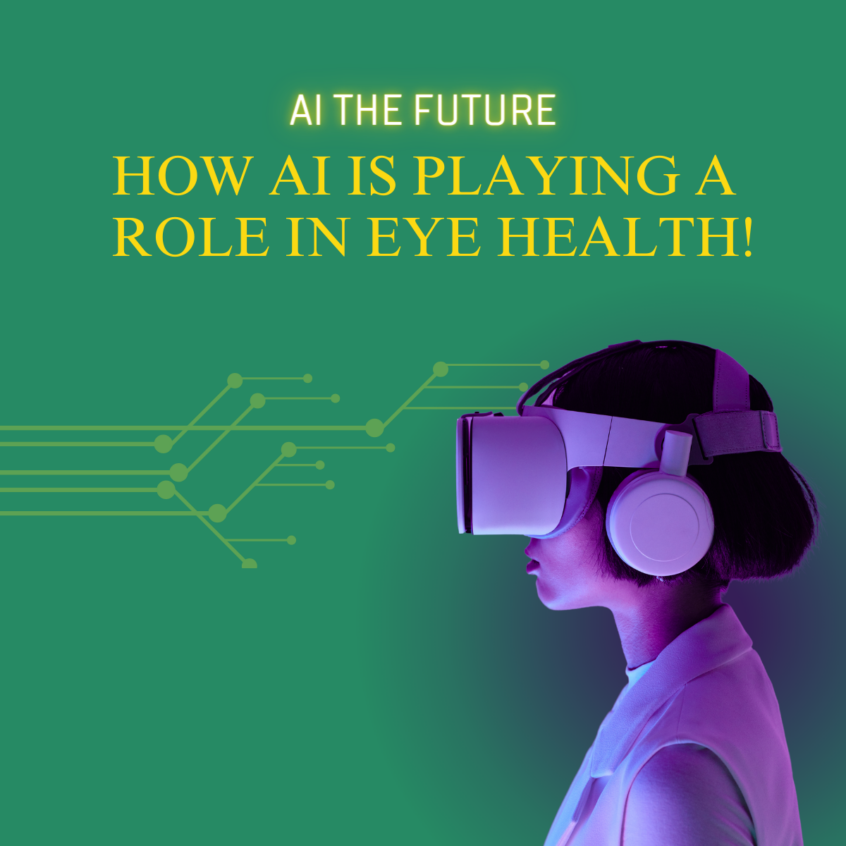Artificial Intelligence (AI) has been revolutionizing various fields, and eye health is no exception. From early diagnosis to personalized treatment plans, AI is playing an increasingly significant role in enhancing eye care. Here’s a look at how AI is transforming the landscape of eye health.
1. Early Detection and Diagnosis
AI algorithms, particularly those based on deep learning, are capable of analyzing vast amounts of data from retinal images to detect early signs of eye diseases such as diabetic retinopathy, glaucoma, and age-related macular degeneration (AMD). These algorithms can identify subtle changes in the retina that might be missed by the human eye, enabling earlier and more accurate diagnoses.
For instance, Google’s DeepMind has developed an AI system that can analyze optical coherence tomography (OCT) scans to detect over 50 different eye diseases with high accuracy. This early detection is crucial for preventing disease progression and preserving vision.
2. Personalized Treatment Plans
AI is also being used to create personalized treatment plans for patients. By analyzing individual patient data, including genetic information, lifestyle factors, and disease progression, AI can recommend the most effective treatments tailored to each patient’s unique needs. This personalized approach can improve treatment outcomes and reduce the risk of side effects.
For example, AI-driven platforms can predict how a patient will respond to certain medications for conditions like glaucoma, allowing ophthalmologists to choose the most effective treatment with the fewest side effects.
3. Telemedicine and Remote Monitoring
The COVID-19 pandemic has accelerated the adoption of telemedicine, and AI is at the forefront of this shift. AI-powered apps and devices enable patients to monitor their eye health from the comfort of their homes. These tools can analyze images of the eye taken with a smartphone or a specialized device, providing instant feedback and recommendations.
Remote monitoring is particularly beneficial for patients with chronic eye conditions who require regular check-ups. AI can help detect any changes in their condition early, allowing for timely intervention without the need for frequent in-person visits.
4. Surgical Assistance and Training
AI is also making its way into the operating room. Robotic systems guided by AI can assist surgeons in performing delicate eye surgeries with greater precision and accuracy. These systems can reduce the risk of complications and improve surgical outcomes.
Additionally, AI is being used to train the next generation of ophthalmologists. Virtual reality (VR) and augmented reality (AR) platforms, powered by AI, provide realistic simulations of eye surgeries, helping trainees practice and refine their skills in a risk-free environment.
5. Predictive Analytics
Predictive analytics powered by AI can help identify patients at high risk of developing eye diseases before symptoms appear. By analyzing data from electronic health records, lifestyle factors, and genetic information, AI can predict which patients are most likely to develop conditions like glaucoma or AMD. This allows for proactive measures, such as lifestyle modifications or preventive treatments, to be implemented early.
6. Improving Access to Eye Care
AI has the potential to democratize eye care by making it more accessible to underserved populations. In regions with a shortage of eye care specialists, AI-powered diagnostic tools can be deployed in community clinics or even via mobile units. These tools can screen large numbers of people quickly and accurately, identifying those who need further medical attention and ensuring they receive the necessary care.
For example, AI-driven platforms can be used in rural areas to screen for diabetic retinopathy. Patients can have their retinal images taken and analyzed on-site, with the results being reviewed remotely by specialists if needed. This approach not only increases access to eye care but also helps catch diseases early, preventing vision loss in populations that might otherwise go untreated.
7. Research and Drug Development
AI is accelerating research in ophthalmology by analyzing vast datasets to uncover new insights and potential treatments. Machine learning algorithms can sift through genetic data, medical records, and clinical trial results to identify patterns and correlations that humans might miss. This can lead to the discovery of new drug targets and more efficient clinical trials.
Moreover, AI can help in repurposing existing drugs for new uses in eye care. By analyzing the molecular structure of drugs and their interactions with biological pathways, AI can suggest alternative uses for medications, potentially speeding up the availability of effective treatments.
8. Enhancing Patient Education and Engagement
AI-powered chatbots and virtual assistants are being used to educate patients about their eye conditions and treatment options. These tools can provide personalized information based on a patient’s medical history and current health status, helping them make informed decisions about their care.
Additionally, AI can enhance patient engagement by sending reminders for medication, appointments, and follow-up visits. This helps ensure patients adhere to their treatment plans, which is crucial for managing chronic eye conditions and preventing complications.
AI is revolutionizing eye health by improving early detection, enabling personalized treatments, enhancing surgical precision, and expanding access to care. As AI technology continues to advance, its role in ophthalmology will only grow, offering new opportunities to preserve and enhance vision for millions of people worldwide. Embracing these innovations will be key to addressing the evolving challenges in eye health and ensuring that everyone has access to the highest quality of care.
